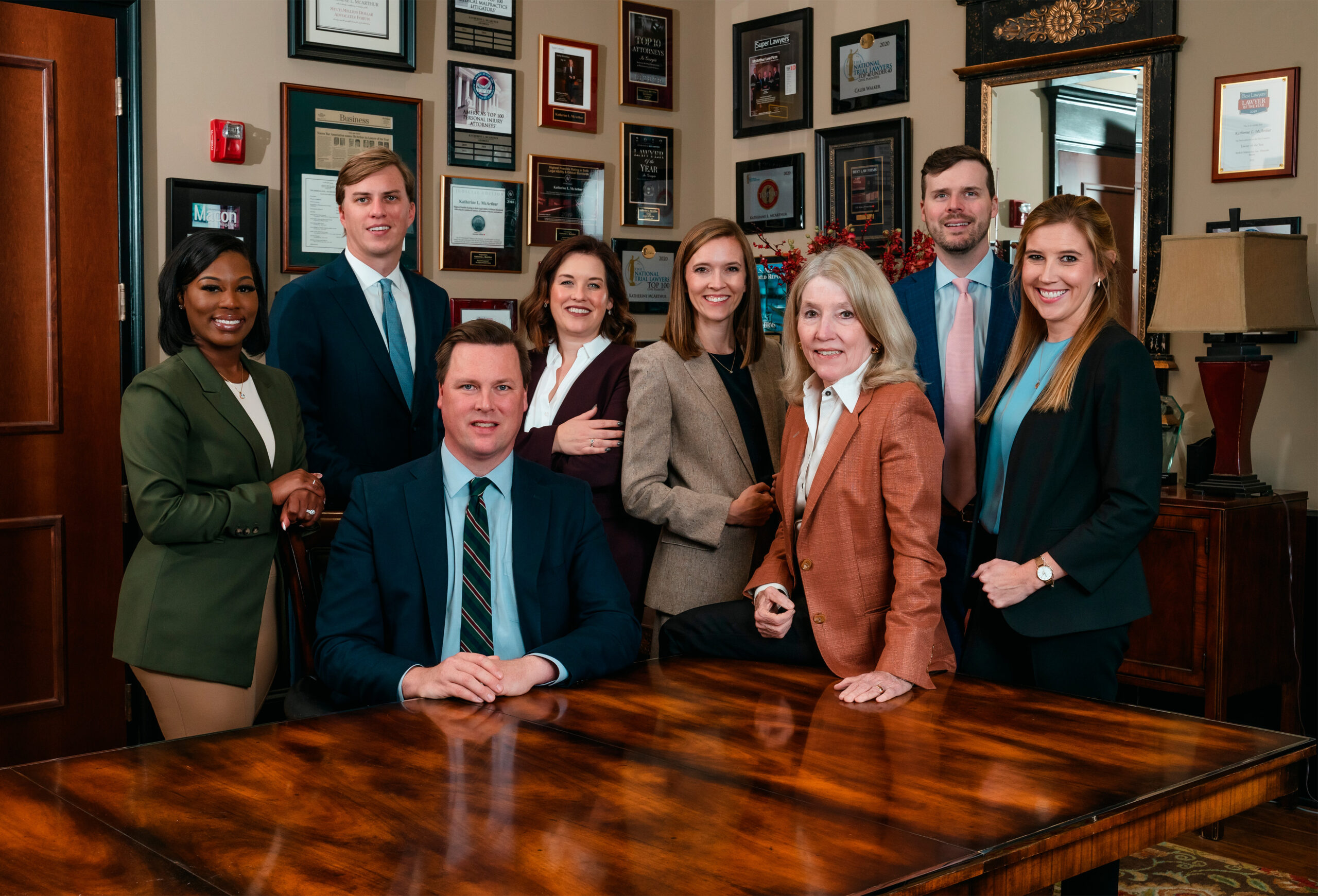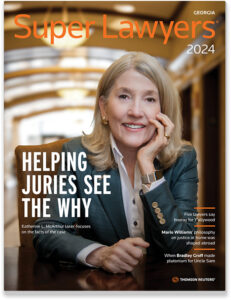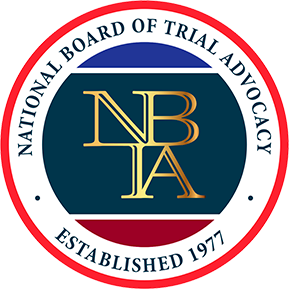Construction sites in Georgia are some of the most dangerous places a person can work. Day after day, men and women climb scaffolding, dig trenches, handle heavy machinery, and work around live electrical lines. When a site is unsafe, when corners are cut, equipment is defective, or safety rules are ignored, the outcome is often devastating. Falls from heights, trench collapses, electrocutions, and machinery accidents leave workers with catastrophic injuries that change their lives and their families forever. These are not just “workplace accidents.” They are preventable tragedies that demand accountability.
Georgia Unsafe Construction Site Accident Lawyer
At McArthur Law Firm, our attorneys have spent decades standing up for injured workers and their families in Macon, Atlanta, and across Georgia. We understand the toll that an unsafe construction site injury takes, medical treatment that never seems to end, wages that disappear overnight, and the emotional stress of not knowing how to rebuild a life. In the following sections, we explain how unsafe construction site accidents occur, who may be legally responsible, what rights workers and their families have under Georgia law, the types of financial compensation that may be pursued, and how a Georgia unsafe construction site accident lawyer fights to secure justice when workers are hurt by unsafe conditions.
McArthur Law Firm serves the entire state of Georgia, including: Fulton County, Bibb County and Fulton County, as well as Clayton County, Cherokee County, Forsyth County, and surrounding communities. For more information about the McArthur Law Firm or to set up a free consultation to learn what we may be able to do to help you with your unsafe construction site accident and/or injury case, give us a call at one of our offices in Georgia or fill out our online contact form.
- Atlanta Office: 404-565-1621
- Macon Office: 478-238-6600
- Warner Robins: 478-551-9901
Overview of Georgia Unsafe Construction Site Accidents
- Major Types of Unsafe Construction Site Accidents in Georgia
- Where Unsafe Construction Site Accidents Often Happen in Macon and Atlanta
- Who Might Be Liable in an Unsafe Construction Site Accident
- The Role of an Unsafe Construction Site Accident Lawyer in Georgia
- Frequently Asked Questions About Unsafe Construction Site Accidents
- Resources
Major Types of Unsafe Construction Site Accidents in Georgia
Falls From Heights — Construction often requires work on ladders, scaffolds, rooftops, or cranes, where a single misstep can lead to disaster. These accidents are among the most common and dangerous on a worksite because the higher the fall, the greater the chance of severe harm. Broken bones, spinal injuries, and traumatic brain injuries often result. In some cases, victims may face permanent disability that changes their ability to work and live normally.
Falling Objects — Tools, equipment, or construction materials can fall from overhead and strike workers below. On multi-level building sites, this danger is constant, as activities on upper floors create risks for those working underneath. Even with protective helmets, the force of a falling object can cause concussions, fractures, and internal organ injuries. These events are sudden and often give workers little to no time to react.
Electrocutions — With the use of temporary power sources, unfinished electrical systems, and exposed wiring, electrocution remains a serious hazard. Workers may accidentally come into contact with live wires, damaged cords, or overhead power lines. Electrocution injuries can include burns, nerve damage, and in severe cases, heart failure. Even a brief exposure to high voltage electricity can cause lasting physical and emotional effects.
Trench Collapses — Trenches are dug to install foundations, pipes, or cables, but they carry a constant risk of collapse. A sudden cave-in can bury workers beneath tons of soil, leaving them trapped with little chance to escape. These accidents are among the deadliest on construction sites because suffocation and crushing injuries happen quickly. Survivors often endure serious trauma, including fractures, organ damage, and long-term psychological stress.
Scaffold Accidents — Scaffolding allows crews to reach tall and difficult areas, but when scaffolds are unstable or overloaded, they can collapse. Workers may fall from significant heights or be struck by planks and tools that fall during the collapse. Such incidents often occur without warning, making them extremely dangerous. Injuries from scaffold accidents frequently include spinal cord damage, brain injuries, and multiple fractures.
Machinery Accidents — Construction depends heavily on equipment such as forklifts, cranes, bulldozers, and backhoes. These machines are powerful and, in the wrong conditions, extremely dangerous. Workers can be pinned, crushed, or struck by moving equipment, while malfunctions may cause unexpected hazards. Injuries from machinery accidents are usually severe, ranging from amputations and broken bones to life-threatening trauma.
Explosions and Fires — Sparks from welding, leaking fuel, and improperly stored chemicals can trigger explosions or fires. When these events occur, they spread rapidly across a worksite, putting both workers and bystanders in immediate danger. Victims often suffer serious burns, smoke inhalation, and permanent scarring. These accidents are especially destructive because they can harm large groups of people at once.
Slip, Trip, and Fall Hazards — Construction sites are often cluttered with tools, cables, and materials, creating constant tripping hazards. Wet surfaces, uneven ground, and poor lighting also make falls more likely. While some falls may seem minor, they can still cause painful injuries like sprains, fractures, and back problems. Over time, repeated slips and trips can also lead to chronic health issues.
Caught-In/Between Accidents — Workers can become trapped between heavy machinery, vehicles, or collapsing structures. These accidents often occur suddenly and can crush limbs, damage internal organs, or even cause instant death. The danger is particularly high in tight spaces where workers have limited room to move. Survivors frequently require multiple surgeries and face a long recovery.
Chemical Exposure Accidents — Construction sites often involve the use of paints, solvents, adhesives, and other hazardous substances. Workers may inhale toxic fumes or absorb chemicals through the skin. Immediate effects can include burns, rashes, or respiratory distress. Long-term exposure raises the risk of chronic illnesses such as lung disease, neurological problems, and certain types of cancer. These accidents often have both immediate and delayed consequences, making them especially difficult for victims.
Where Unsafe Construction Site Accidents Often Happen in Macon and Atlanta
Downtown Macon Construction Projects — Macon’s growing downtown area has seen steady redevelopment, with new offices, apartments, and retail spaces under construction. Busy sites in dense urban areas put workers at risk of falls from scaffolding, being struck by falling objects, and accidents involving heavy machinery. The close proximity to pedestrians and traffic also increases the danger when safety measures fail.
Highway and Interstate Construction Zones — Both Macon and Atlanta have ongoing highway expansions, bridge repairs, and interstate maintenance projects. Roadside construction exposes workers to unsafe conditions such as fast-moving vehicles, unstable ground, and heavy equipment. These zones are among the most dangerous because of the constant interaction between traffic and construction activity.
Residential Development Sites — Suburbs around Macon and Atlanta are expanding with new housing subdivisions, apartment complexes, and mixed-use communities. These sites often involve trench digging, roofing, and electrical installation. Workers in these environments face risks from falls, trench collapses, and electrocution. Because projects are spread out, hazards can sometimes go unnoticed.
Industrial Sites and Warehouses — Atlanta’s role as a logistics hub means warehouses, distribution centers, and industrial plants are frequently under construction or renovation. Work in these large facilities often involves heavy machinery, forklifts, and complex electrical systems. Slip and fall hazards, machinery accidents, and chemical exposures are especially common in these industrial spaces.
Large-Scale Public Projects — Hospitals, schools, stadiums, and public infrastructure projects bring together multiple contractors, subcontractors, and crews. In both Macon and Atlanta, these large-scale projects increase the chances of unsafe conditions because of the number of workers, overlapping tasks, and constant movement of materials. Accidents involving scaffolding, falling objects, and machinery are frequent on these worksites.
Who Might Be Liable in an Unsafe Construction Site Accident
Construction Companies — The company overseeing the project is usually the first responsible party when it comes to worker safety. Under O.C.G.A. § 34-2-10, employers in Georgia must provide a safe work environment. In many cases, injuries on the job are addressed first through the Georgia Workers’ Compensation Act (O.C.G.A. § 34-9-1 et seq.), which gives injured workers medical care, wage replacement, and rehabilitation benefits.
General Contractors and Subcontractors — Construction projects often involve several layers of contractors, each responsible for different tasks. If unsafe practices by a contractor or subcontractor contribute to an accident, they may be held accountable. However, an employee’s direct compensation usually begins with a workers’ compensation claim, while separate negligence actions may be brought against third parties.
Property Owners — Owners of land or structures being built or renovated may share liability. Georgia premises liability law (O.C.G.A. § 51-3-1) requires property owners to keep premises safe for lawful workers. If a dangerous condition on the property contributes to harm, the owner can face claims beyond workers’ comp benefits.
Equipment Manufacturers — Injuries caused by defective machinery, scaffolding, or tools may lead to claims under Georgia’s product liability statute (O.C.G.A. § 51-1-11). In these situations, workers’ compensation can cover medical costs and wages, while separate lawsuits can pursue damages from the manufacturer.
Third-Party Vendors — Independent contractors, trucking companies, or suppliers may also cause unsafe conditions. If their actions contribute to an accident, victims can pursue third-party negligence claims. Workers’ comp may provide immediate relief, but third-party lawsuits may secure broader damages not available under workers’ comp.
The Role of an Unsafe Construction Site Accident Lawyer in Georgia
Guiding Victims Through Workers’ Compensation — After an unsafe construction site accident, the first step for most injured workers in Georgia is filing a claim under the Georgia Workers’ Compensation Act. A lawyer ensures that the claim is filed correctly, deadlines are met, and benefits such as medical treatment, wage replacement, and rehabilitation services are fully provided. Attorneys also fight back when insurers delay, deny, or undervalue legitimate claims.
Pursuing Third-Party Claims for Additional Recovery — Workers’ compensation provides important benefits, but it does not cover everything. Pain and suffering, loss of future income, and full compensation for catastrophic injuries are not part of workers’ comp. An construction injury lawyer identifies other responsible parties — such as contractors, property owners, or equipment manufacturers — and brings separate claims under Georgia negligence and product liability laws to secure broader compensation.
Fighting for Full Damages in Personal Injury and Wrongful Death Cases — A Georgia unsafe construction site accident lawyer handles both insurance claims and lawsuits, building cases that pursue every type of compensation the law allows. In personal injury cases, damages may include medical bills, lost wages, reduced earning capacity, and pain and suffering. In wrongful death cases, damages often include funeral expenses, lost financial support, and the emotional losses suffered by surviving family members. These cases are different from standard personal injury claims because they require deep knowledge of construction safety standards, OSHA regulations, and the overlapping responsibilities of multiple parties.
Frequently Asked Questions About Unsafe Construction Site Accidents
How long does someone have to file a claim after an unsafe construction site injury in Georgia?
A person in Georgia usually has two years from the date of an unsafe construction site injury to file a lawsuit. Workers’ compensation claims must be filed earlier, typically within one year, so acting quickly is very important.
Can a worker sue their employer after an unsafe construction site accident in Georgia?
In most cases, Georgia’s workers’ compensation system prevents direct lawsuits against employers. However, after an unsafe construction site accident, injured workers may still bring claims against third parties such as property owners, subcontractors, or equipment manufacturers whose negligence also contributed to the injury.
What should someone do immediately after an unsafe construction site injury?
The first priority after a construction site injury is medical treatment. Once stable, the worker should report the injury to their employer, take photos or videos of the scene, gather witness names, and contact a qualified lawyer for guidance.
Does workers’ compensation cover all costs after an unsafe construction site accident?
Workers’ compensation provides medical care, partial wage replacement, and some rehabilitation services. But after an unsafe construction site accident, it does not cover pain, suffering, or emotional distress. Victims often need third-party claims to recover full financial and personal damages.
Can a family file a wrongful death claim after an unsafe construction site injury?
Yes. If a worker dies because of an unsafe construction site injury, surviving family members may file a wrongful death lawsuit. Damages may include funeral costs, the loss of income support, and the value of companionship that was taken away.
How much money can someone get after an unsafe construction site injury?
The value of compensation for an unsafe construction site injury depends on severity, medical treatment, lost wages, and third-party involvement. While workers’ compensation offers limited benefits, lawsuits against negligent parties can result in significantly higher financial recovery for victims.
Can multiple parties be responsible for an unsafe construction site injury in Georgia?
Yes. An unsafe construction site injury can result from several sources, including unsafe property conditions, negligent subcontractors, or defective machinery. Georgia law allows injured workers to pursue claims against all responsible parties whose combined failures contributed to the harm they suffered.
Resources
U.S. Department of Labor – Fatal Fall in Arcadia — This U.S. Department of Labor news release explains how Landmark Erecting Inc., a Georgia construction contractor, failed to enforce fall protection measures, leading to a 31-year-old worker’s death in Arcadia. It details OSHA’s repeat citation, penalties, and the company’s legal obligations.
U.S. Department of Labor – Fatal Fall in Macon — This U.S. Department of Labor release outlines OSHA’s investigation into NOR-D LLC after a 54-year-old worker fell through a skylight at a Macon warehouse. The report lists multiple violations, including lack of fall protection, unsafe equipment use, and failure to report the fatality.
OSHA – Construction Industry — This Occupational Safety and Health Administration resource provides information on safety hazards in the construction industry. It covers regulatory requirements, compliance guidelines, outreach programs, and specific hazard categories such as falls, machinery, trenching, silica exposure, and electrocutions.
City of Atlanta – Report a Code Violation — This City of Atlanta page explains how to report suspected building code violations, illegal construction, or unpermitted activity. It highlights the importance of reporting violations for safety, health, property values, legal compliance, and community well-being.
CDC – About Construction — This CDC resource from NIOSH provides an overview of safety and health in the construction industry. It presents statistics, major risks such as falls, and worker demographics. The page also addresses mental health, opioid use, and challenges faced by Hispanic and women workers.
National Library of Medicine – Interventions to Prevent Injuries — This systematic review and meta-analysis from the National Library of Medicine examines interventions to reduce construction worker injuries. It analyzes multiple studies on regulations, training, safety campaigns, and workplace programs. The findings suggest mixed results, with limited evidence on the effectiveness of many interventions.
Hire a Personal Injury Lawyer for Unsafe Construction Site Accidents in Atlanta, Georgia
McArthur Law Firm serves the cities of Atlanta in Fulton County, Macon in Bibb County, Kathleen in Houston County, Peachtree Corners and Lawrenceville in Gwinnett County, Marietta and Smyrna in Cobb County, Stonecrest, Brookhaven and Dunwoody in Dekalb County, Albany in Dougherty County, Columbus in Muscogee County and throughout the surrounding areas of the state of Georgia.
Contact one of our offices at the following numbers or fill out an online contact form to start building your case.
- Atlanta Office: 404-565-1621
- Macon Office: 478-238-6600
- Warner Robins: 478-551-9901







